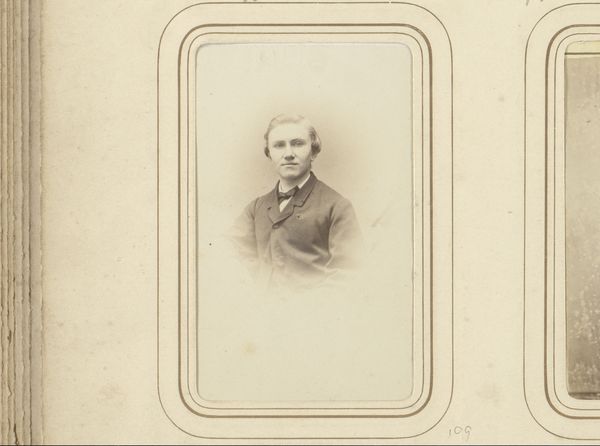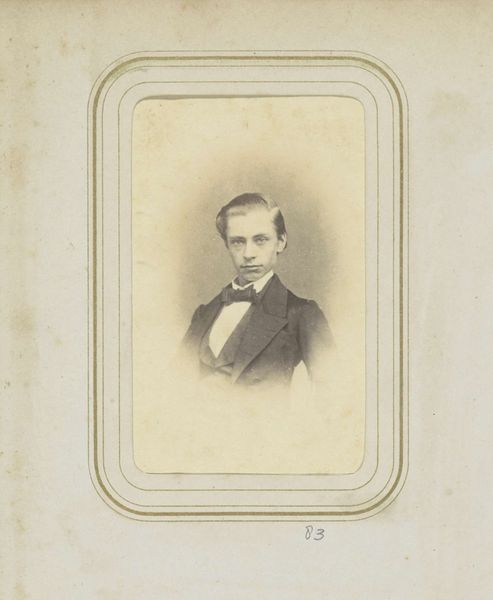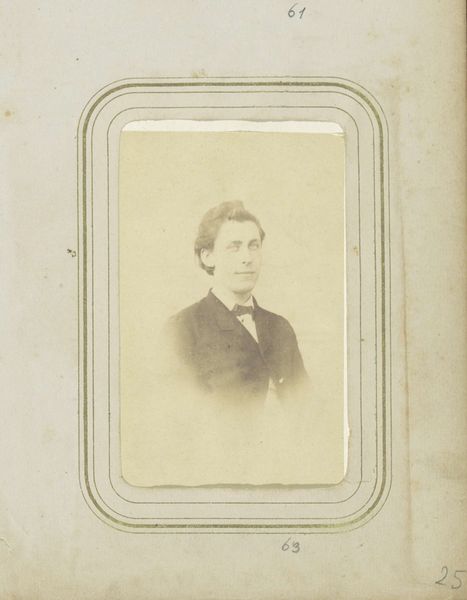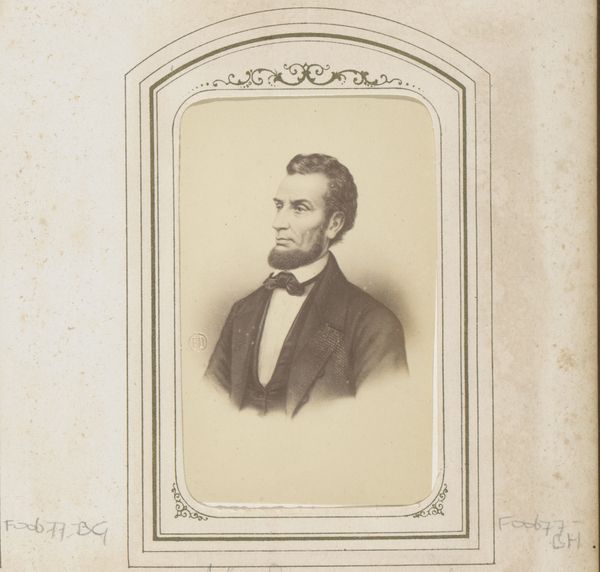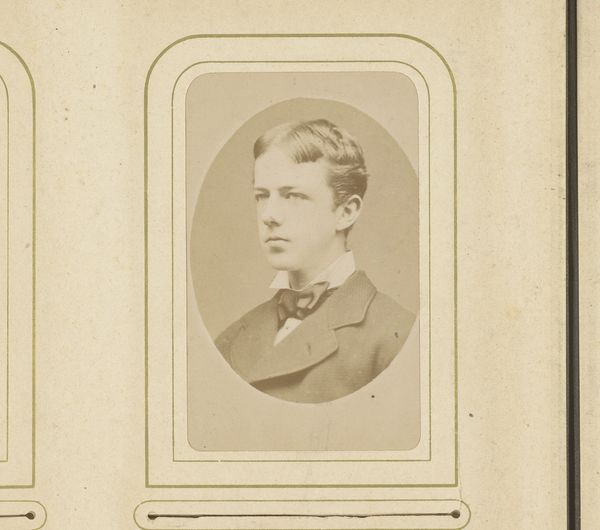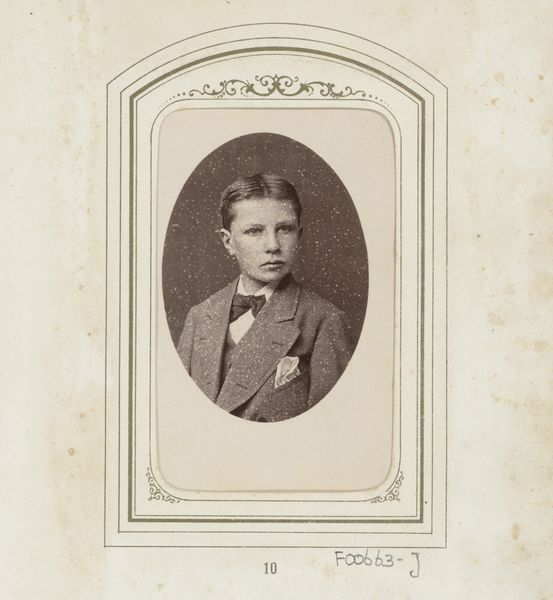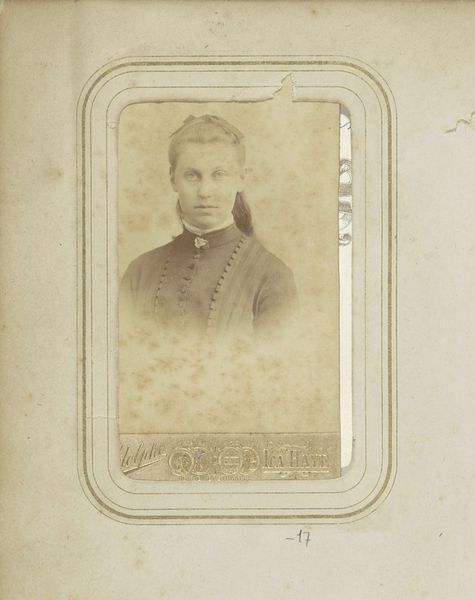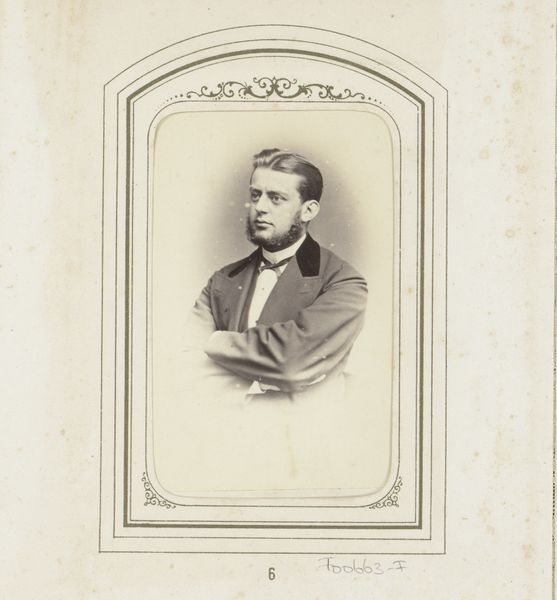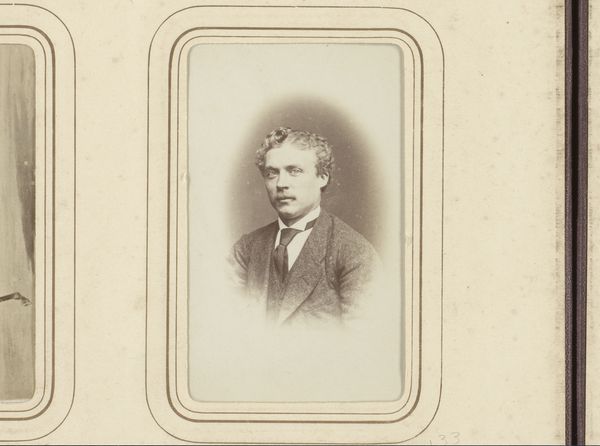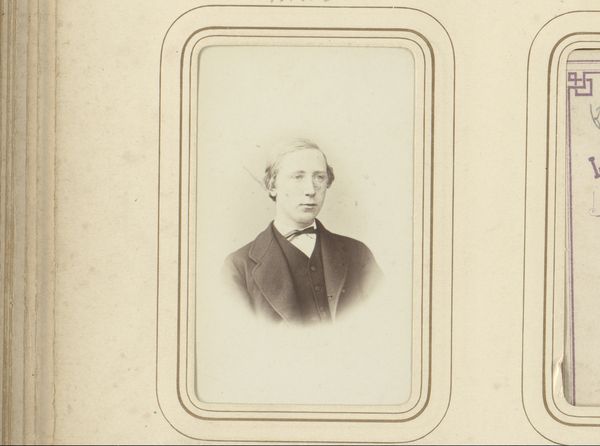
Dimensions: height 85 mm, width 53 mm
Copyright: Rijks Museum: Open Domain
Curator: Before us is a daguerreotype simply titled "Portret van een man" or "Portrait of a Man," created sometime between 1860 and 1880 by Hendrik Anthonie Karel Ringler. Editor: It’s surprisingly haunting. The man's pose, arms crossed, combined with the somewhat ghostly appearance of the image itself, makes him seem very distant, almost confrontational. Curator: The daguerreotype as a medium carries considerable weight. Early photography wasn't merely documentation, it was alchemy. The process involved coating a silvered copper plate and exposing it to iodine fumes... These early images held a peculiar power for people. Editor: Absolutely, I'm curious about what compelled Ringler to embrace the Daguerreotype. Photography was emerging, so using a cumbersome, costly method signifies a distinct artistic intention. The tint, the grain, the almost palpable silver – it lends gravity. Curator: Indeed. We must consider the social context, too. Portraits offered access to collective identity and memory at a moment of both revolutionary progress and devastating military conflict. Even details, like his clothing become coded symbols of status and societal affiliation. Editor: Look closely at the backdrop! Such images often replicated styles from painted portraits popular for centuries, further emphasizing ties between artistic conventions and emergent practices within industrializing economies of the mid-19th century. He has his arms crossed tightly – his clothing looks rather severe... Was that typical? Curator: It reinforces an air of bourgeois seriousness but beyond immediate social markers, this also fits a tradition. Photography allowed an aspirational and democratized representation. Think how empowering access could have been. Editor: Still, one imagines how carefully subjects presented themselves during an age marked by shifting hierarchies based on material prosperity. One pose could convey ambition or apprehension toward modernity’s transformation of labor itself. Curator: A profound perspective! The symbols become windows into complex cultural landscapes of rapid change that characterized Ringler’s era in new, revealing, poignant ways. Editor: The sitter might have felt pressure by this new technique that could either validate them or question their role... What's visible only scratches deeper surfaces, clearly. Curator: Precisely.
Comments
No comments
Be the first to comment and join the conversation on the ultimate creative platform.
